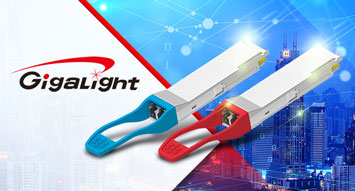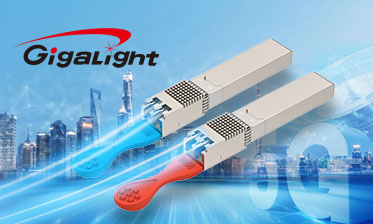The 100G single lambda optical specification, grounded in PAM4 signaling technology, has become ubiquitous in the industry. It facilitates the efficient transmission of 100G data streams over a single wavelength or laser channel, offering significant advantages in terms of capacity and simplicity. The 100G Lambda Multi-Source Agreement (MSA) oversees the development of this standard, ensuring its compatibility and optimization for both 400G and 100G network applications. By adhering to this MSA, network operators can leverage the robust and reliable performance of 100G single lambda optics to meet their evolving bandwidth demands.
The prevalence of 100G single lambda technology underscores its value in modern optical networks. Advanced optical transceivers like 100GBASE-SR4, 100GBASE-LR4, 100G-CWDM4, and 100G-PSM4 harness four sets of receivers and transmitters, each operating at 25Gb/s in parallel lanes. These systems either optically multiplex or combine these four signals onto a single fiber for data transmission, a process that traditionally necessitated costly optical components.
In contrast, the 100G lambda approach offers a cost-effective alternative, achieving greater transmission efficiency at a lower cost. By leveraging 100G PAM4 signaling technology, transceivers adhering to this specification consolidate the transmission of 100G data per wavelength into a single optical signal. This not only simplifies the optical architecture by reducing the number of receivers and transmitters from four to one but also helps to minimize overall costs and optical complexity.
100G Single Lambda Vs. 100G Four Channels
For example, 100GBASE-LR4, 100G-CWDM4 and 100G-PSM4.100GBASE-LR4 is proposed for up to 10km stretched links consisting of 4 multiplexed wavelengths carried by a single fiber. However, closely spaced wavelengths with LAN WDM wavelength spacing cannot be accommodated without expensive hermetic packaging for optimal laser temperature control.
Moving on to the second option, 100GBASE-CWDM4 offers improved wavelength spacing compared to other technologies, which can be advantageous in certain deployment scenarios. However, this configuration has a limitation in that it does not support connections exceeding 2 kilometers in length. This constraint may make it less suitable for applications requiring longer reach.
The third option, 100GBASE-PSM4, addresses some of these challenges by utilizing four fiber pairs and a wide wavelength for data transmission. This approach simplifies the complexity associated with managing multiple wavelengths and lasers, making it an attractive choice for certain applications. However, 100GBASE-PSM4 is also limited in its reach, typically suitable for links up to 500 meters in length.
In summary, each of these 100G single lambda technologies has its unique strengths and limitations, making it essential to carefully consider the specific requirements of the network when selecting the most appropriate option.
Now let us bring 100G single lambda into the discussion. Three common optical modules included in the 100G single-lambda series are 100GBASE-LR (100G-LR), 100GBASE-FR (100G-FR) and 100GBASE-DR. These optical transceivers are designed to receive electrical signals from a host (in a 4 x 25G configuration) and feature a DSP that converts the received signal using PAM4 modulation instead of PSM4, LR4 or CWDM4 using NRZ signals. The application of PAM4 signals on a single lambda means that a single laser can be used to transmit a complete 100G data stream. This network infrastructure eliminates the need for parallel fiber optics or WDM, thereby reducing the number of optical components required such as receivers and transmitters. The design of 100G single lambda technology is simpler, the number of optical components is significantly reduced, and manufacturing costs are reduced. 100G Lambda MSA has recognized that the cost of a single 100G lambda is at least 40% lower than the cost of four channels of 25G.
GIGALIGHE Single Lambda 100G Optical Transceiver
100GBASE-DR supports links up to 500m, while 100GBASE-FR and 100GBASE-LR support 2km and 10km respectively. The corresponding GIGALIGHT products include 100G QSFP28 DR1/FR1 and LR1 optical transceivers, including III-V family and silicon photonic versions. At the same time, GIGALIGHT also has 100G QSFP28 BIDI LR1 and ER1 based on the EML version, which can transmit 10km and 40km.

Not only that, GIGALIGHT also launched 100G single-lambda optical transceivers based on SFP56-DD form factor, including 100G SFP56-DD FR1/LR1 and ER1, which meet the transmission requirements of 2km, 20km and 30km, and are suitable for data centers, 5G communication networks, etc. application scenarios.

100G Single Lambda in 400G Network
100G Single Lambda technology is attractive because it reduces the cost of upgrading infrastructure to 400G while also opening up new possibilities for the future. In fact, this technology is used to break down 400G signals into 4×100G instead of NZR’s 8×50G. Single-channel 100G also reduces the manufacturing cost of 400G QSFP-DD optical transceivers.100G Lambda can ease the transition from 100 to 400G by reducing the structural complexity of 400G transceivers. At the same time, it will also bring great savings by reducing the number of fibers.
